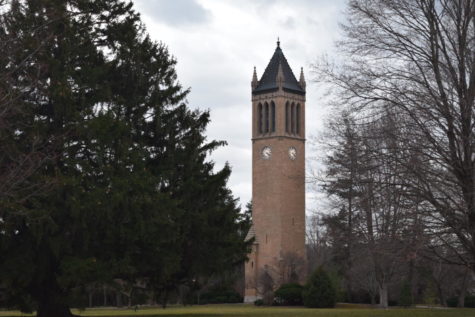Lynch: Prevention before relief
June 6, 2013
Late afternoon last week, I texted my friend and asked her to join me for a walk. It had been cloudy all day, but the sun finally came out, so I embraced it. About an hour into our walk, the sun was suddenly swallowed by heavy clouds. Within minutes, my friend and I, quite surprised and unprepared, found ourselves hiding under a bus shelter, waiting for the rain to die down.
Little did I realize that in those moments when I thought luck was bad, families in Moore, Okla., and many nearby counties were probably facing the same problem but with greater, life-altering consequences.
A Category 5 tornado, lasting a little over an hour, leveled the suburb. The death toll reached at least 24 people, nine of whom were children, and the damage to the homes of countless families was overwhelming. A school in Moore, Plaza Towers Elementary School, was leveled and seven of the nine children among the deceased were students at this school when the tornado struck.
However, the one thing that may have been bigger than the tornado itself was the response to its destruction on all of the dominating media sites. From the pitiful teenager to the philanthropic celebrity, tweets and statuses were filled with calls to donate and pray for the victims of this disaster. The nation, including our leader, President Obama, made a clear recognition that these areas should get everything they need to recover from such a disaster.
It is clear that these tragedies — especially in the past year, with disasters seeming to pile up — unite a nation in the support as well as the monetary and material relief offered to the victims by a mass of people. That is a powerful image and reality. Still, I cannot help but think that prevention should be addressed with greater emphasis as a complement to the messages of relief.
Tornadoes in Oklahoma, especially in Moore, can be considered routine for this season, but when a tragedy like this occurs, such a perspective should be reassessed. Sure, tornadoes are common in the Midwest, and many of us have probably handled severe weather, or even actual tornadoes, but what we can learn from the victims in Oklahoma who have no homes, and for some, no families to go back to, is that we should take these situations more seriously as they occur in our lives.
On the federal level, actions should be taken to provide areas commonly affected by these events — or major natural disasters, really — with the proper shelter and supplies to stay safe when a storm hits.
As the Representative Mark McBride, of the Oklahoma House of Representatives, put it so clearly, the deaths of the children in Moore, especially from Plaza Towers, emphasizes the need to reexamine whether schools, as well as other public buildings, should require storm shelters. Although school administrators assured that necessary and immediate action was taken to protect the children of each institution, the death toll could have been diminished with stronger and more sustainable facilities.
What can we do on the individual level, though? It is pretty simple really: Listen and act. When a warning is given by any weather official, pay attention to it. Don’t brush it off as an exaggeration of a routine storm. Sure, the storm may be routine, until an F5 tornado rips through your town. I’m sure the people in Moore and surrounding areas took the weather warnings seriously, so I think we need to follow their example in that way.
I have heard far too many of my friends brush off a tornado warning, believing it would never actually happen. This has got to change. I’m not saying when the next tornado warning is broadcasted that we need to run away scared and prepare for the coming apocalypse, but I do think when warnings are given, we need to listen and act on what officials are saying.
The primary message here is prevention. Work with the federal and state governments to provide appropriate safety facilities that can withstand a number of “routine” natural weather occurrences. And be willing and ready to act with the thought that any “routine” storm can turn into a disaster.














